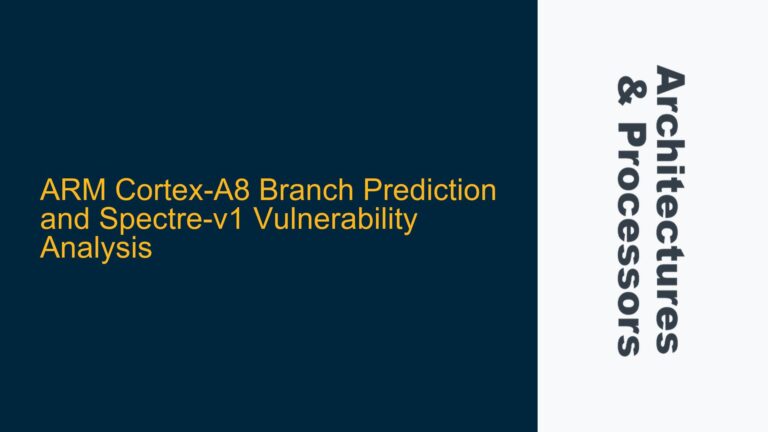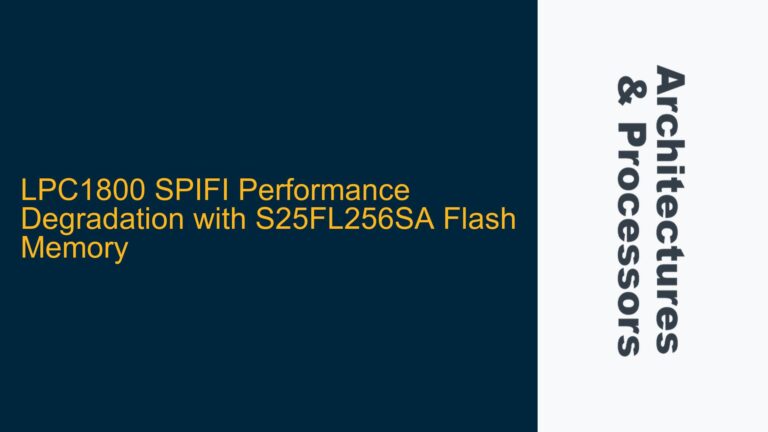Cortex-M4 SCB_ICSR.VECTORPENDING Bit Field Discrepancy
The System Control Block (SCB) is a critical component in ARM Cortex-M series processors, providing essential system control and configuration functionalities. One of its key registers, the Interrupt Control and State Register (ICSR), plays a pivotal role in managing interrupt handling and system exceptions. Specifically, the VECTORPENDING field within the SCB_ICSR register is used to indicate the pending interrupt or exception vector number. However, a discrepancy exists in the documentation regarding the bit field range for the VECTORPENDING field. According to the Cortex-M4 Devices Generic User Guide (DUI0553B), the VECTORPENDING field is depicted as spanning bits [21:12] in one figure, while a table in the same document indicates that only bits [17:12] are available, with the remaining bits reserved. This inconsistency can lead to confusion and potential implementation errors, especially for developers relying on precise register definitions for interrupt handling and system debugging.
The VECTORPENDING field is crucial for identifying which interrupt or exception is currently pending and awaiting service. Misinterpreting the bit field range can result in incorrect vector number calculations, leading to improper interrupt handling, system crashes, or undefined behavior. Therefore, it is essential to clarify the correct bit field range and understand the implications of this discrepancy on system design and debugging.
Documentation Typographical Error and Interrupt Vector Limitations
The primary cause of the confusion lies in a typographical error within the Cortex-M4 Devices Generic User Guide. The figure incorrectly represents the VECTORPENDING field as spanning bits [21:12], while the table accurately specifies that only bits [17:12] are used for the VECTORPENDING field, with bits [21:18] reserved. This inconsistency is further compounded by the fact that the maximum number of interrupts supported by the Cortex-M4 processor is limited to 240, as per the ARMv7-M architecture specification. This limitation implies that only 8 bits are required to represent the interrupt vector number, as 2^8 = 256, which is sufficient to cover the 240 interrupts.
The typographical error in the figure likely stems from an oversight during the documentation process, where the bit field range was incorrectly extended to include reserved bits. This error can mislead developers into believing that the VECTORPENDING field spans a wider range than it actually does, potentially leading to incorrect assumptions about the number of supported interrupts and the handling of reserved bits. Additionally, the reserved bits [21:18] should not be accessed or modified, as their behavior is undefined and could lead to unpredictable system behavior if improperly manipulated.
Correcting VECTORPENDING Bit Field Interpretation and Implementation
To address the confusion and ensure accurate implementation of the SCB_ICSR.VECTORPENDING field, developers should adhere to the following guidelines:
First, always refer to the table in the Cortex-M4 Devices Generic User Guide (DUI0553B) for the correct bit field range. The table accurately specifies that the VECTORPENDING field spans bits [17:12], with bits [21:18] reserved. This means that the VECTORPENDING field is 6 bits wide, allowing for the representation of up to 64 unique values. However, given the Cortex-M4’s support for up to 240 interrupts, only the lower 8 bits (bits [7:0]) of the VECTORPENDING field are used to represent the interrupt vector number. The remaining bits within the VECTORPENDING field are reserved and should not be accessed or modified.
Second, when reading the VECTORPENDING field, developers should mask out the reserved bits to ensure that only the relevant bits are used for interrupt vector number calculations. This can be achieved by applying a bitmask to the SCB_ICSR register value. For example, in C code, the VECTORPENDING field can be extracted as follows:
uint32_t vector_pending = (SCB->ICSR & SCB_ICSR_VECTORPENDING_Msk) >> SCB_ICSR_VECTORPENDING_Pos;
In this code snippet, SCB_ICSR_VECTORPENDING_Msk is a predefined mask that isolates the VECTORPENDING field, and SCB_ICSR_VECTORPENDING_Pos is the position of the VECTORPENDING field within the SCB_ICSR register. By using these predefined constants, developers can ensure that only the relevant bits are considered, avoiding any potential issues related to reserved bits.
Third, developers should be aware of the maximum number of interrupts supported by the Cortex-M4 processor and ensure that their interrupt handling logic accounts for this limitation. The ARMv7-M architecture specifies a maximum of 240 interrupts, which means that the interrupt vector number will always fit within the lower 8 bits of the VECTORPENDING field. Any value outside this range should be treated as an invalid interrupt vector number and handled accordingly.
Finally, it is important to consult the latest version of the Cortex-M4 Devices Generic User Guide and other relevant documentation to ensure that any discrepancies or errors have been addressed. ARM periodically updates its documentation to correct errors and provide additional clarification, so developers should always use the most recent version available.
In conclusion, the confusion surrounding the SCB_ICSR.VECTORPENDING bit field range in the Cortex-M4 Devices Generic User Guide is due to a typographical error in the figure depicting the register layout. By referring to the table in the documentation and adhering to the correct bit field range, developers can avoid potential issues related to interrupt handling and system debugging. Additionally, understanding the limitations of the Cortex-M4 processor’s interrupt support and properly masking out reserved bits will ensure accurate and reliable system implementation.






